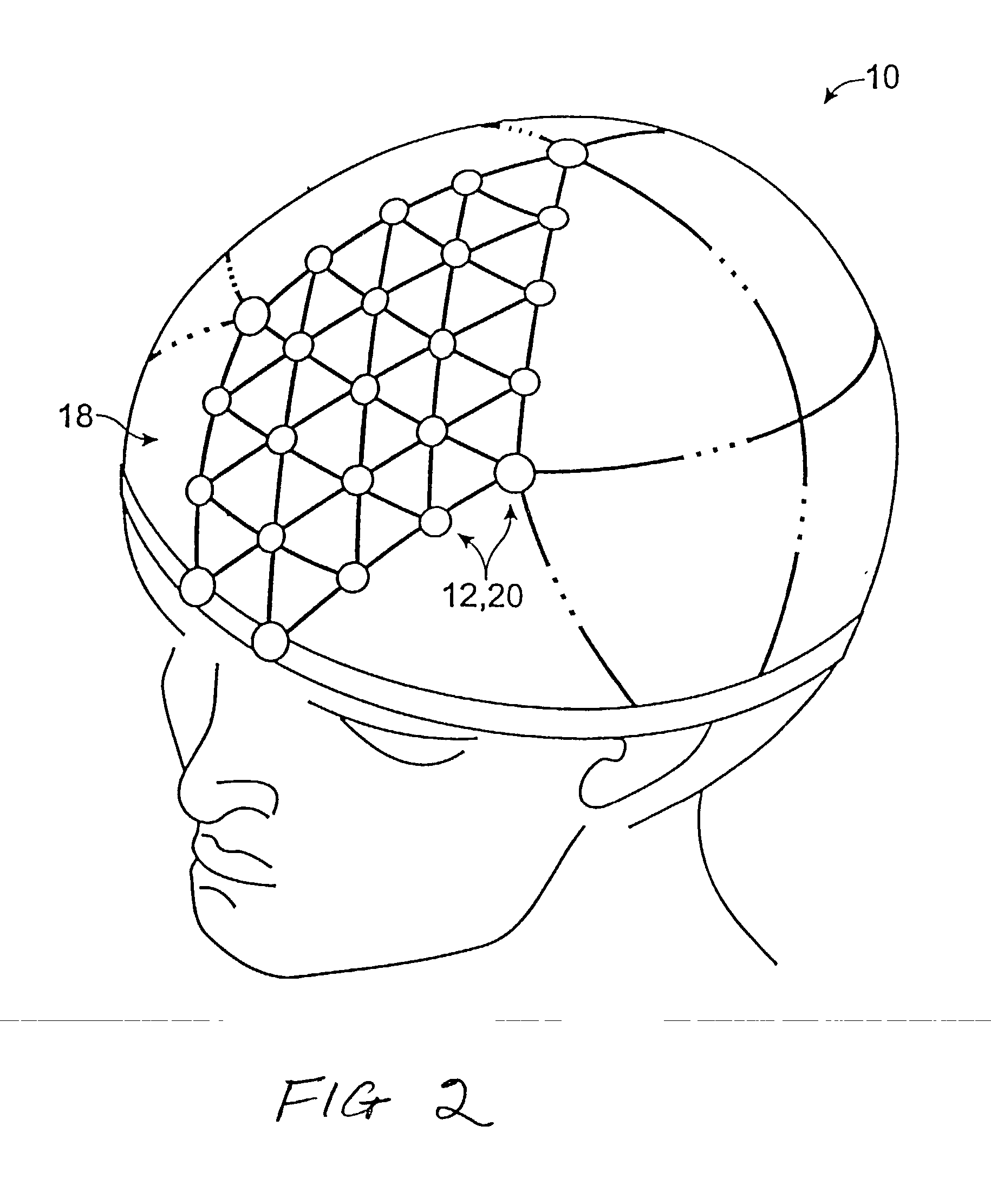Method for neural current imaging
a neural current and imaging technology, applied in the field of neural current imaging, can solve the problems of limited spatial resolution, inability to identify sources with great accuracy, and cost-intensive shielding
- Summary
- Abstract
- Description
- Claims
- Application Information
AI Technical Summary
Problems solved by technology
Method used
Image
Examples
Embodiment Construction
[0037] A preferred method for imaging neural currents according to the present invention is described below, along with the preferred application of determining the spatial and temporal parameters or coordinates of neural currents in the brain. However, it should be understood that methods according to the invention may be used generally to improve the clarity or precision of any data and are therefore not limited to neural current imaging. Moreover, methods according to the present invention may be used for imaging any electrophysiological activity in which current flows, such as heart electrical activity.
[0038] Referring to FIG. 1, a portion 10 of a body, such as a human head, is shown with sources "S" inside that are representative of neural activity. Particularly, the sources "S" represent nerve cells that carry neural currents from one interior location in the head to another. The neural activity can result from a voluntary or involuntary motor function, or be a result of thoug...
PUM
 Login to View More
Login to View More Abstract
Description
Claims
Application Information
 Login to View More
Login to View More - R&D
- Intellectual Property
- Life Sciences
- Materials
- Tech Scout
- Unparalleled Data Quality
- Higher Quality Content
- 60% Fewer Hallucinations
Browse by: Latest US Patents, China's latest patents, Technical Efficacy Thesaurus, Application Domain, Technology Topic, Popular Technical Reports.
© 2025 PatSnap. All rights reserved.Legal|Privacy policy|Modern Slavery Act Transparency Statement|Sitemap|About US| Contact US: help@patsnap.com



